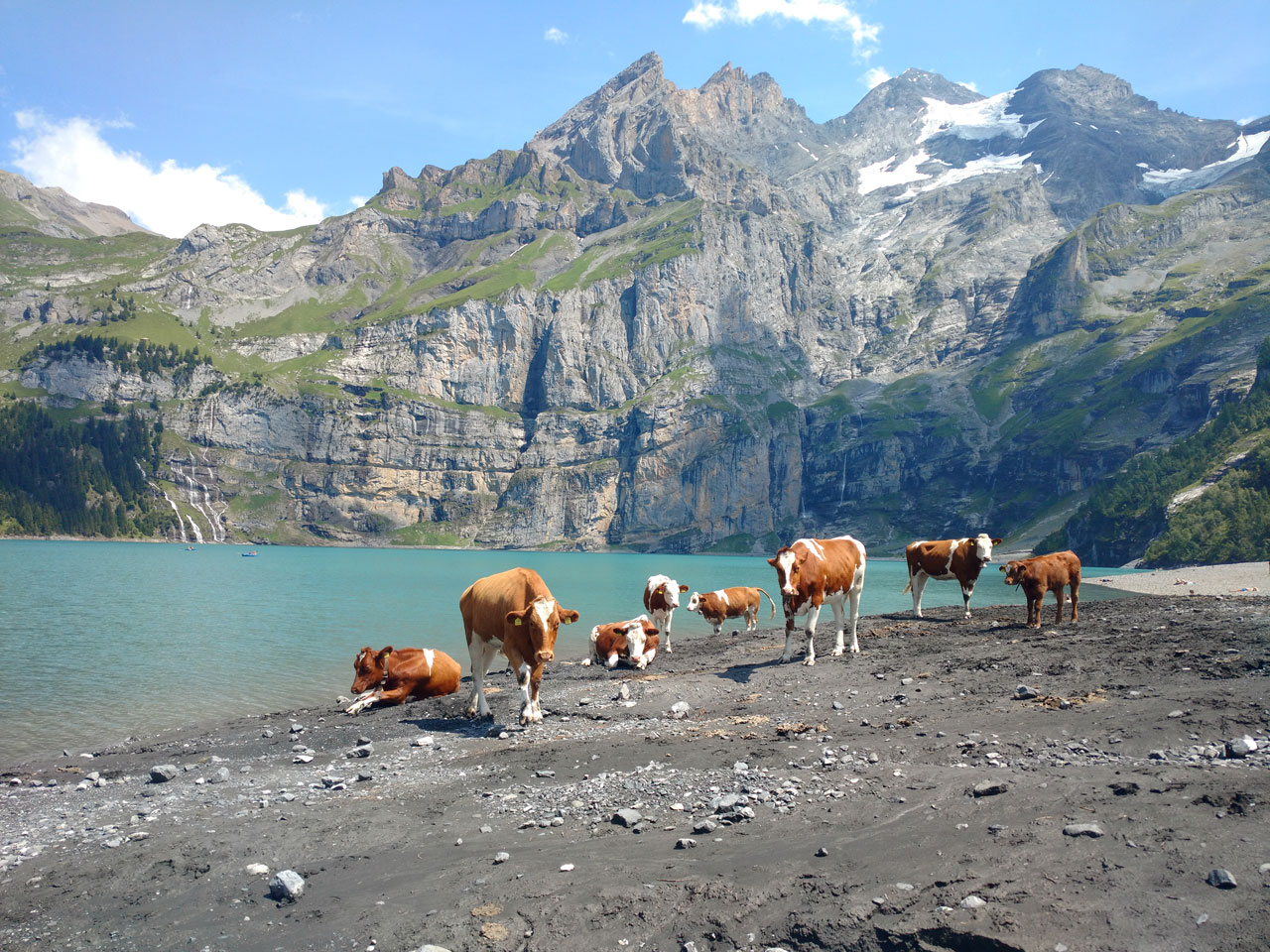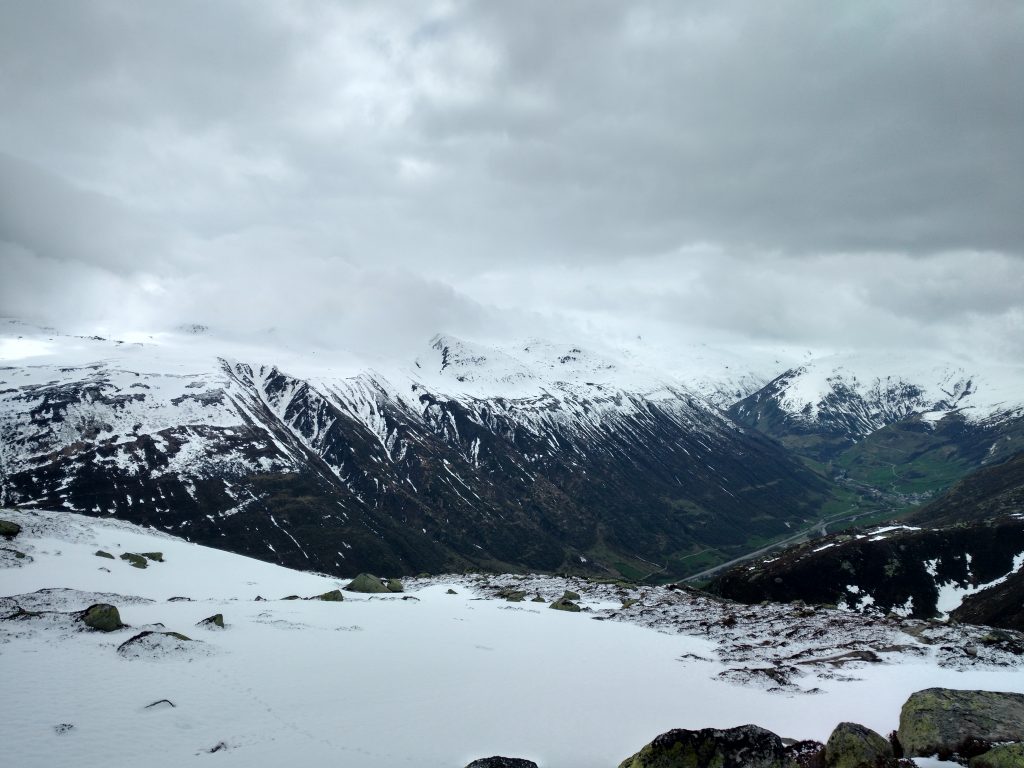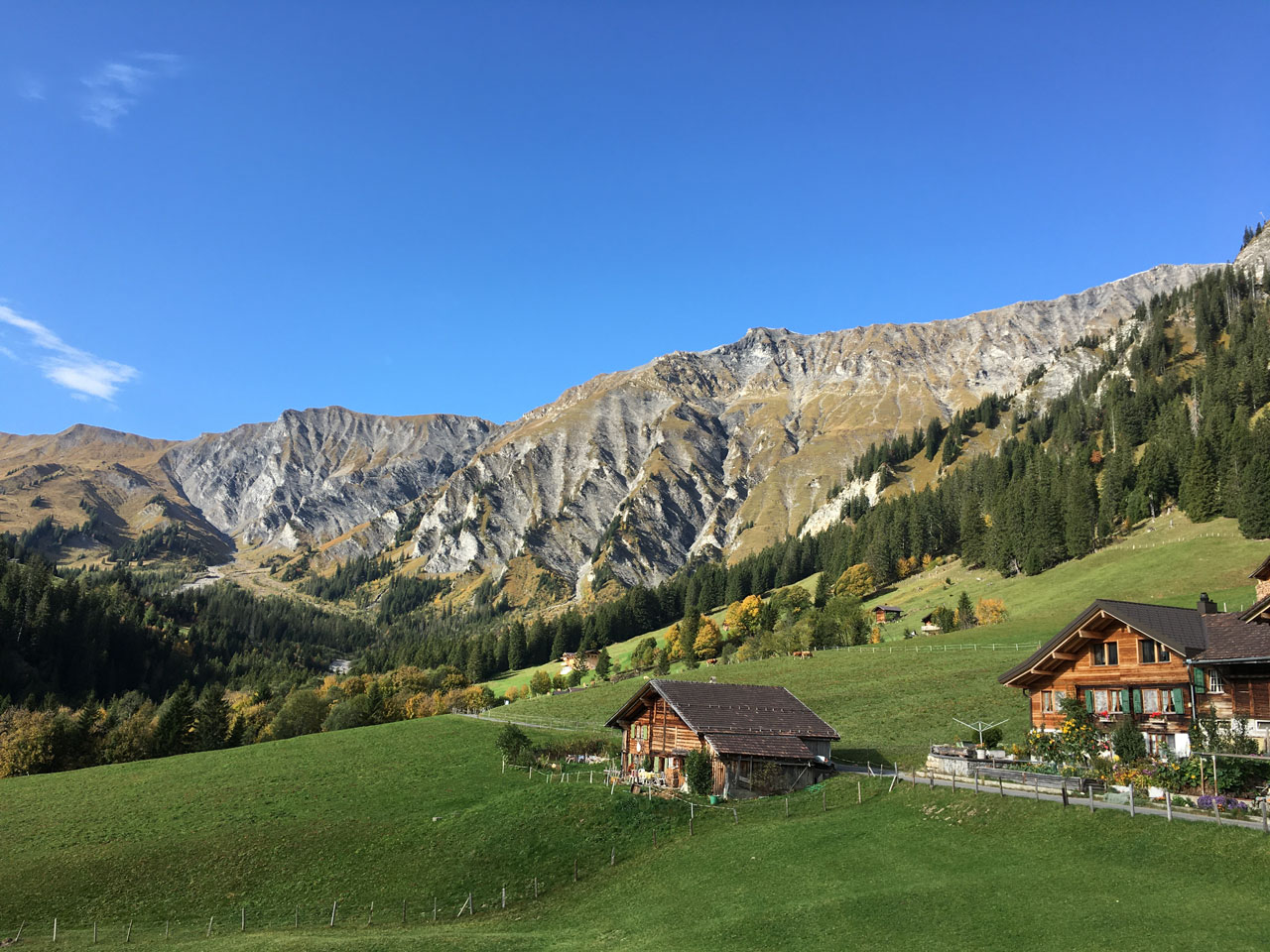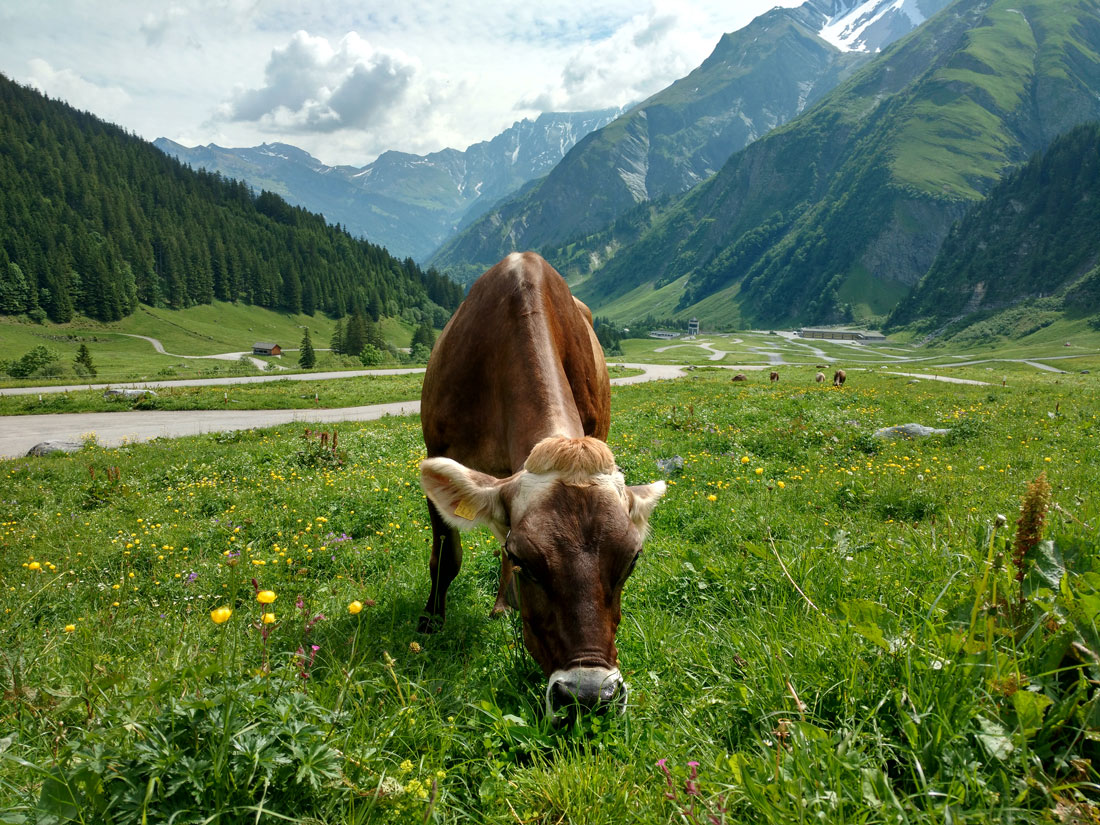These Swiss Alps hiking tips will help you if you want to hike in the most beautiful mountains probably not just in Europe, but probably in all over the world. Let’s discover how to have the most amazing experience while doing so. I have prepared some Swiss Alps hiking tips just for you.

I have prepared a list of Swiss Alps hiking tips based on my own experience. Be aware that these tips apply for hiking trails and paths, not hard and technical mountaineering routes.
To sum up shortly all the Swiss Alps hiking tips will help you to answer these questions:
- Where to find the hiking trails.
- Which hiking trail to choose.
- How to dress up in the Swiss Alps.
- How to plan one day or few days trip in the Swiss Alps.
- Swiss Alps hiking budget tips
- What is the best time to hike in the Swiss Alps
- What else to take on your hike in the Swiss Alps
Let’s dive in into all the Swiss Alps hiking tips.
Table of Contents
Swiss Alps hiking trails
Switzerland offers thousands of kilometers of hiking paths, different routes, ferratas, well prepared hiking roads and wild rickety dickety tracks.
Your hiking route can go via mountain passes, can go up more than 3000 m in altitude or can be an easy walk by the mountain base.
Surely, the most beautiful roads are in the mountains and the higher you go, the better and more breathtaking views you get. I would always suggest to go up at least 2000 meters in altitude as in such height more beauty is uncovered by every step.
As well, I have prepared some of the best hiking trails in these beautiful locations:
And many other Hiking routes you can find here: Hiking in Switzerland.
To find out the best suiting track for you, you should investigate also this website: Swiss hiking routes.
There you can find a lot of hiking routes, hundreds. In Switzerland – choosing one road, you can even cross all the country. But if you want to do the Swiss Alps hiking tour, you must choose something what is in the mountains.
When checking out the route on the website I suggested, you can actually get a pretty good idea how beautiful the place while looking through the pictures, but it is always important as well to check the altitudes.
Now, the biggest Swiss Alps mountains are mostly situated closer to Italy, France – actually, the more you go to Italy, Liechtenstein, France (Geneva) direction, the bigger the mountains. There are no great mountains by the German border. Basically, from Basel to Zürich, to Bern – no real big mountains.

I personally would highly suggest check out hiking maps/routes by St Moritz, Grindelwald, Lugano, Sion, Zermatt (extremely popular destination). As well mountain passes are very well developed and are immensely beautiful: Furka Pass, Grimsel Pass, Klausenpass, Oberalp Pass and many others.
Actually, any bigger destination (village, town, city) can be reached by train in Switzerland, so it doesn’t really matter where you land: Basel, Zürich, Geneva – all of them have good train connections. Just a note: Geneva is the closest to the big mountains. All train connections can be found here:
What Swiss Alps hiking route to choose?
I would say that it depends on these conditions:
- What is your physical condition?
- How many days can you spend in the Swiss Alps?
- What is your budget?
- What kind of equipment and clothes you have?
- When do you want to do this hiking?
Now let’s discuss every point deeper.
Your physical condition can define how much you should hike a day and what kind of terrain you should choose. To say it simply, mountains are a very different beast compared to flat forest path. If you can easily hike 10 km in the forest in your neighborhood, it is going to be very different in the mountains. You can get pretty tired very fast in the mountains, even after a few kilometers, so just remember – you must pace yourself.
If you are an active person, running, hiking or doing any other sports on a weekly basis, you should have no problem hiking up in the mountains (even if very slow) and 1000 m altitude gain a day should not be a big problem. Just a suggestion if you have a GPS watch or GPS app on your phone: to keep it safe and pleasant, do not hike faster than 3km/h (especially when going up). If there’s an incline, and you will try to keep the pace of 4-5km/h, you are going to be very tired and thirsty in minutes.
If you don’t do any sports and you think that your physical condition is not that good, I would suggest not to hike more than 5-7km in the mountains, and do not try to gain more than 500 m in altitude, otherwise it can become very fast a very unpleasant experience. Pace yourself, be smart. Always be smart in the mountains 🙂 I would suggest for you lower mountains in for example Gantrisch Nature Park near Bern. Great mountains, not that big, pleasant, still great views and nature. Consider mountains lower than 1500m.
Second question is: how much time do you have?
Your planning must be considered on the timeline you have.
One day in the Swiss Alps
If you have just one day, the best way to explore Swiss Alps is:
Jump straight to the train from your airport. I would suggest to choose these directions: Grindelwald, Zermatt, St Moritz, Davos, Lauterbrunnen, Interlaken or Engelberg. These are very popular destinations in Switzerland and are very very well developed. You can jump out of the train there and go straight to the mountains. They are right in the backyard of these villages/towns/cities. It is amazing how reachable they are there.
If you are on even tighter schedule, you can check all the cable cars in the cities you wish to go: this way, you will get pretty high in minutes. Zermatt has the highest cable car station in Europe: it sits at astonishing 3883 meters altitude! That’s amazing. I was there couple of times – I even feel the lack of oxygen there and become very slow. If you are lucky and there are no clouds, views are great. Bad thing: you can not really hike too much up there as it is very high, snow is always there and you would need special equipment to do something there.
But all the cities I mentioned has some kind of cable cars which takes you very high and you can hike over there for couple of hours. Most of these places have nice restaurants or even hotels, so it’s simply great and convenient. So to conclude, if you have just one day – I highly suggest to follow such plan and you are still going to feel the Swiss soul.
Few days in the Swiss Alps
If you have more than one day in Switzerland, I would suggest you to do a hut to hut hiking in Switzerland. That can become the adventure of your life.
Switzerland has an extremely well developed network of mountain huts. You can find them all here: Swiss huts. It has it all. All the huts are there with pretty detailed information: how to get there, what is inside the hut, what services they offer, pricing, when they are open and so on.

If you want to have a really good time – try to avoid hiking through bigger cities and try to stay as much as possible in small villages and simply: in the mountains. If you really want to plan a long hike through mountains, I would like to suggest reading my article about this topic: Hut to hut hiking in Switzerland.
Basically, I can say, one thing is very important while doing such stuff in the mountains: planning planning and planning. You should be aware of all possible connections, hiking distances, altitudes, your equipment, clothes, costs and everything else, but I got it all covered in the article I just mentioned 🙂 I hope it helps, if not, let me know, I will try to answer all the questions.
Hiking the Swiss Alps on a budget tips
First things first: Switzerland is expensive. Maybe the most expensive country in Europe, but it doesn’t mean that you can have a good time there. Just try to avoid so called tourist traps.
Tourist traps would be:
- Cable cars. Now, let me explain, I have just offered to use them if you have just one day. So it looks like I am contradicting myself, but stay with me. If you have just one day, there’s no way you can hike up to the mountain and then walk down and still manage to go back to train, to the airport and so on. Hiking up and down can take 4-5 hours in some cases or even longer. So to save up the time and have the best possible experience – use them. Mostly cable cars cost from 20 to 80 CHF. It depends there you are, how long is the line and so on. In some small villages (Sulwald near Grindelwald) you can get it pretty cheap like 12 CHF, but in Zermatt it can cost around 80 CHF. But if you have more time, you would like to do the hike yourself up the mountain, do not spend money on cable cars. You are going to have the real hiking experience avoiding them. Even though I love cable cars: they are just beautiful, comfortable and such a nice experience.
- Restaurants. I always suggest people to try the local cuisine, but if you are on a budget – avoid it. Simple dinner can cost you from 20 CHF and if you do it everyday, that sums up to a substantial amount. Buy food in stores: Denner, Volg, Lidl, Aldi – these are the cheapest shops with very good food.
- Huts with full package service. Once again, I think it’s amazing to have a dinner prepared by local guy/lady living in a hut, but that cost a lot. Most of the huts will offer you full package: bed with dinner/supper/breakfast. That can cost even 100 CHF a night. So if you are on a budget, take to the hut your food and rent just a bed.
- Taxi. That is very expensive in Switzerland. Very. But Switzerland has an amazing train system and very good bus connections to basically everywhere. Check the hut information on website how to reach it (it never offers taxi) and use it. Avoid rush and do not use taxi, take it easy, it is your vacation 🙂
- Hotels. If you can, try to sleep as much as you can in the huts as hotels are pretty expensive, especially the ones high in the mountains. You can easily spend 200 CHF a night and if you get anything lower than 100 CHF – consider it a great deal.
To sum up: if you sleep in the huts, buy all food in the shops (consider as well, that meat is very expensive here) – you should not spend too much money. As well, if you have a tent and sleep in camping sites – you can save a lot of money as well.
It is hard to tell how much exactly you are going to spend for food a day as everyone has different needs, but I think you can fit into 20CHF a day.
Swiss Alps hiking equipment and clothes tips
Now, it is very very important to have all the right clothes and equipment if you are going to hike in the Swiss Alps, especially if you want to do a few days hike.
Temperatures and weather conditions can change pretty fast in the mountains, even if it’s sunshine at 14.00, it can get pretty cold, windy and rainy at 14.30, so you must be prepared.
You must have some kind of rain protection. It can be a GoreTex jacket or a simple “plastic” jacket (it’s sufficient if rain is not that long), but it is a must. You don’t want to get cold and wet in the mountains, especially if the weather changes for worse for long time. As well, if you have GoreTex pants – the better.
Shoes should be hiking shoes, preferably – GoreTex. The same as for jacket, you don’t want your feet to be cold and wet. That gets very uncomfortable very fast.
In the mountains you are going to walk for quite long periods on rocky/gravel roads, so a sturdy thicker shoe pad is a good thing, so your feet won’t start hurting after a few kilometers. Those rocky roads can kill your feet if you are in a simple running shoes.
Your backpack should not be too big, I would say up to 60L, as every additional kilogram is very well felt in the mountains. It just pushes you down. Backpack as well – with rain protection.
I wouldn’t take too much socks, underwear and other stuff as huts have washing facilities.
Book – try to take just one 🙂 Or Amazon Kindle.
Try to have the phone with full battery or even with additional battery and don’t forget to get international mobile data as you may need to check something: maps, huts, phone numbers, etc.

If you like it, you can take hiking poles. These are very helpful going up and going down and they don’t take too much space in your backpack or connected to your backpack.
As well, I would consider to take some kind of survival kit: a whistle, some medicines, glue, etc, as it takes so little space, but can immensely help you.
Always have water. Always.
You must know all the Swiss emergency numbers:
Police is 117
Ambulance 144
Swiss rescue 1414. Helicopters.
It is quite hard to be prepared for any possible situation, but if you get rain protection, not too much unnecessary stuff – you should be OK. If you have any specific questions about what to take or not – let me know.
Best time to hike in the Swiss Alps tips
I would always suggest when it is warm and pleasant.
Winter – too much snow, you won’t even be able to pass in some places (unless with skis and snowshoes, but that’s another level that we will discuss later), very cold up in the mountains, most of the huts are closed and so on. Winter is mostly for people with lots of experience.
Spring – still full of snow, still cold, still most of the huts are closed, quite dangerous of melting ice and snow. Quite a lot of avalanches happen in the Spring.
Summer – probably the best time to do this kind of adventure. Most of the snow melts in mid June, if you want to hike up to 3000m, mid July – August is the best time. All of the huts are open, all of the mountain shops, restaurants are as well open. Quite a lot of people are in the mountains in summer time.
Fall – if you ask my honest opinion, I think the best time to do such kind of adventure is September. Why? Summer is very hot in Switzerland, sometimes even pretty high (up to 2000m) can be hot and you will need sunscreen and so on. It is crowded, especially in the huts. It is the high hiking season. It’s not like you are going to see crowds of people hiking in one valley or traffic jams, but in the huts it can get pretty noisy.
September still has great weather. Snow is not there yet in most places. It is not that crowded. Simply put – fall is beautiful in Switzerland.
In October it starts to snow pretty heavily up in the mountains and most of the mountain passes are closed. Temperatures drop. November – full winter time.
Go for September 🙂
As well, most of the mountain peaks, mountain passes, villages or any other known place has a weather station so you can easily check temperatures on Google. You can even check yearly temperatures, precipitation and so on. That is going to be very useful while planning your trip.
Conclusion
Swiss Alps hiking can be a great adventure, but it requires some planning. You must be aware that mountains though are very beautiful, can be a tough cookie if you do some mistakes and we want to avoid that.
You must be well prepared regarding your clothing and equipment; you must be very honest about your physical condition and do not push yourself too much; you don’t have to spend a fortune to have a great time in pricey Switzerland and so on.
Just follow the information I have suggested you, plan your route, find the best accommodation you like, come here and have the time of your life!

If you have any questions about Swiss Alps hiking tips, please let me know, I will do my best to help you.
Please do not forget to follow me:
Instagram: @golookexplore
Facebook: golookexplore
Youtube: golookexplore
Pinterest: golookexplore
Pin it for later




